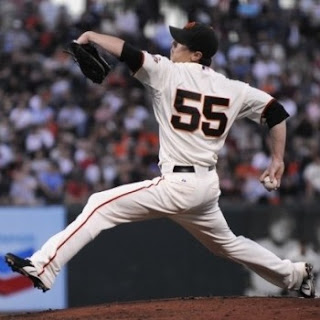Throwing Mechanics: What is Healthy and Unhealthy?
Nolan Ryan is still renowned for his throwing mechanics. What clues does he leave?
If you have watched enough baseball you will realize that there are multiple ways to throw a baseball. Whether that is from different arm angles, ways of holding the ball, or moving the hand to make the ball move. With that being said, there is always quite a bit of debate in regards to what is healthy and what isn't healthy with throwing. Most of these debates do not use fact but rather personal experiences. Personal experience is important, but when we are talking about a whole group of athletes we have to realize that every athlete is different and has unique movements based off of genetics. We must use fact and look what experts from multiple fields find is healthiest to do when throwing a baseball or softball.
Today I will be discussing three throwing mechanics that have been deemed dangerous by the baseball community. Each of these are seen as dangerous because in still photos they look uncomfortable and non-fluid. With that being said just because these throwing mechanics look dangerous doesn't mean they are dangerous. More on that later in the post. The three throwing mechanics that will be discussed today all have the word "inverted" in them. Those three are known as the Inverted W, Inverted V, and Inverted L.
Inverted W, Inverted V, and Inverted L
(The Inverted W Mechanic)
(The Inverted V Mechanic)
(Inverted L Mechanic)
As you can see each of these mechanics can appear to be dangerous in still images. That doesn't necessarily mean that these mechanics are dangerous though. But these mechanics, and ALL mechanics can become dangerous if the body is rushed into accelerating the throwing mechanics too quickly. In any movement (man-made or machine) there is a sequence to do certain things. Tension and wearing down occurs when there is too much going on or if things are going too fast in sequence. For example, if you overload a new washer with clothes it'll probably work well for a few times but it will have to overwork with the overload of clothes in it. Now, if it had the recommended amount of clothes in it it'll work longer than it would when it is overloaded and overworking. The same applies to throwing. You can use Inverted W, L, or V but if your body is rushed through the sequence and the arm has to rush to get over the glove arm shoulder at foot strike, then injury can occur.
With all of this being said, any mechanic that is done in the right sequence and consistently done correctly will work for a long time well. That means that the pitcher or thrower can use the Inverted mechanics just so long at foot strike the elbow is at the same height as the shoulder. Another visual to use is the throwing arm should make an L at foot strike.
(Nolan Ryan at foot strike. Notice his elbow is the same height as his shoulder at foot strike. Compare this with the Inverted V Mechanic).
When you compare and contrast Nolan Ryan and Jensen Lewis at foot strike you will see two drastically different images. Ryan is on time with his body sequence and ready to deliver the pitch whereas Lewis is not. Ryan doesn't have to rush his finish with the pitch whereas Lewis will have to rush. Not to mention that rushing through the delivery of pitching or throwing will cause inconsistent results with hitting a target. In summation, it doesn't matter what mechanics you use leading up to foot strike. All that matters is that once you reach foot strike in your throwing or pitching delivery that your elbow is at shoulder height and you are ready to deliver the pitch. Being ready to deliver the throw or pitch will ensure that the athlete is in a good position to make a healthy, accurate, and strong throw.





Comments
Post a Comment